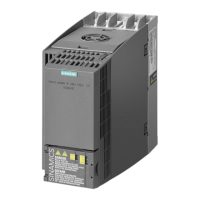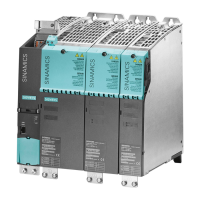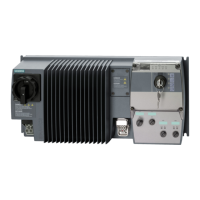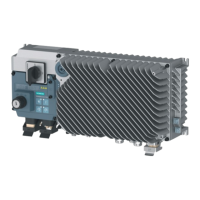Available voltage after failure with and without neutral shift
The following graph compares the available voltage after a failure with and without using
neutral shift. In many cases, the extra voltage available with neutral shift will determine whether
or not a cell failure can be tolerated.
2ULJLQDO1XPEHURI&HOOVSHU3KDVH
:LWKRXW1HXWUDO6KLIW
:LWK1HXWUDO6KLIW
3HUFHQWRI2ULJLQDO9ROWDJH
$YDLODEOHDIWHU2QH)DLOXUH
Figure 7-9 Available Voltage after a failure
The voltage capability of a drive after cell bypass can be calculated using the following
calculation:
If X is the largest number of cells in bypass in two of the phases, then the maximum voltage at
the drive output will be:
Vout_bypass = Vout * (2*N - X) / (2*N)
where: Vout is maximum output voltage that the drive can deliver (Vout = 1.78*N*Vcell)
N is the number of ranks (i.e. number of installed cells = 3*N)
Vcell is the cell voltage rating
Example
For a drive with 18 cells, each rated for 690 V the maximum output voltage that this drive can
deliver is 7.37 kV:
Vout = 1.78 * 6 * 690 = 7.37 kV
With N = 6 and Vcell = 690 V
Operating the Control
7.4 Cell Bypass
NXGPro+ Control Manual
190 Operating Manual, A5E50491925A

